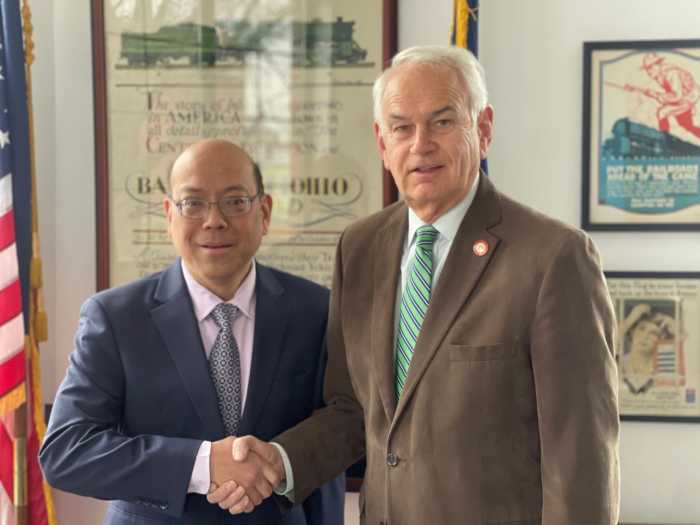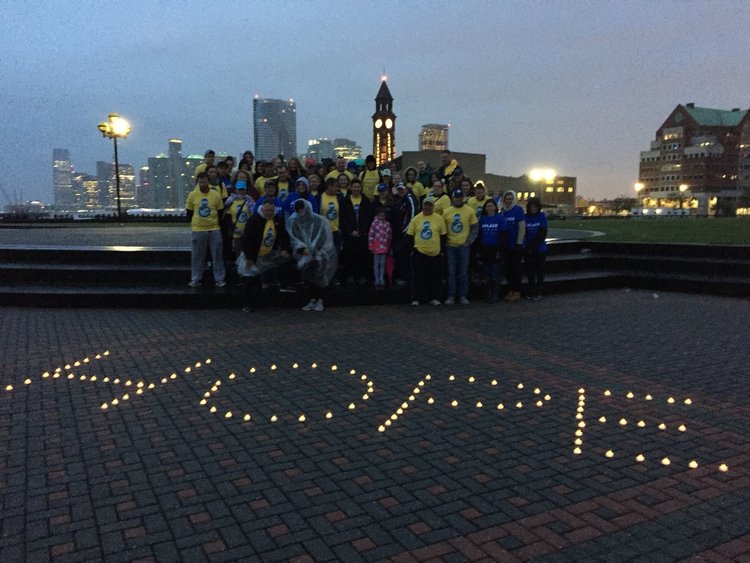By Daniel Arimborgo
Roseann Darche, the borough president's special assistant for education, bore the brunt of the civic members' anger at the planned construction. They reminded her that there are already five schools in the area and contended that the addition of a sixth would make already bad traffic conditions in the area much worse.
The residents said they only wanted word taken back to Borough President Claire Shulman that the school is not wanted at all.
Darche tried to appease the crowd, saying, “I know how you feel.”
“No you don't!” many shouted back.
“This is an elitist school and we will demand a public hearing,” said Patricia Dolan, a civic leader and Community Board 8 member. “The community will be paying for [former Queens College President] Allen Sessoms' legacy for the next 50 years.”
Sessoms resigned last year as president of the college, where the school – PS 499 – is already in operation and currently has 95 students in several portable trailers on the campus.
Students from throughout the city are selected by lottery to attend the school, but residents are skeptical. They believe that children in politically connected families get priority.
Half the teachers are graduate students from Queens College and other city colleges.
The school is adding a grade per year as lower grades advance. When completed, the school will hold 500 students, a scaling down of earlier plans to accommodate 700.
Plans for the permanent location of the school, which was to wrap around Melbourne Avenue onto Kissena Boulevard, were abandoned. The new planned location is to be on the north side of the campus along Reeves Avenue.
Queens College spokesman Ron Canava said in a telephone interview plans for the new site have not been finalized, pending environmental and traffic studies by the city.
Dan McCormack, spokesman for the city School Construction Authority, the agency responsible for planning and building city public schools and conducting assessment studies, said that as a result of the change in school location plans, the new studies will not be ready until sometime in March.
Canava said “some of the community's objections were valid,” with the Board of Education agreeing with the community that the area along Kissena and Melbourne was too heavily used already.
He said he did not know how many buses would be needed to transport students when the school is at full enrollment. Dolan said her civic group estimated at least 50 buses would be necessary.
Construction is scheduled to start in the fall of 2003 and take two years to complete. The project is expected to cost $31 million.
The Queens College elementary school's main focus is on math, science and technology, but the curriculum is to include the arts, humanities and social sciences.
Residents argue that the school does not have typical public school teaching conditions for student teachers because any children who misbehave or do not perform can be dismissed.
“You're feeding them [the teachers] to the animals after giving them trained pets,” said Marcel Wechsler, a KGHCA member.
“How does the borough president justify building a $30 million school on the Queens College campus,” Wechsler asked Darche, “when local schools have the diverse student bodies that the college insists it needs for a lab school for its school of education?”
In June Community Board 8 decided to postpone voting on whether to approve the school, pending the release of the environmental and traffic studies.
“The problem is there's no room,” said Dave Kulick, president of the Flushing on the Hill Civic Association. The civic group's area starts two blocks north of the college campus.
“The point is we have an absurdly congested neighborhood, you have the kids pouring into Bowne (High School) at the same time the kids are pouring into Queens College, and the parking problems are legion. There just are no more spots,” he said.
“Thirty years ago, Queens College bought the houses on the block down from me, chased everybody out, and took them over because they needed more land. Now we're giving away land that should not be going to a school so that they can build a school that has no place being on the campus,” Kulick said.
“If they wanted a lab school, they could have worked with the community to get [PS] 219 or 201,” he said. “The community would have been happy with 20-student class sizes and new teaching techniques.”
Kulick characterized the school as elitist and said only children of the politically connected and those who are gifted gain admission to the school. These would be “the last kids we need as laboratory rats because their parents are already gung-ho on getting them an education,” he said.

































